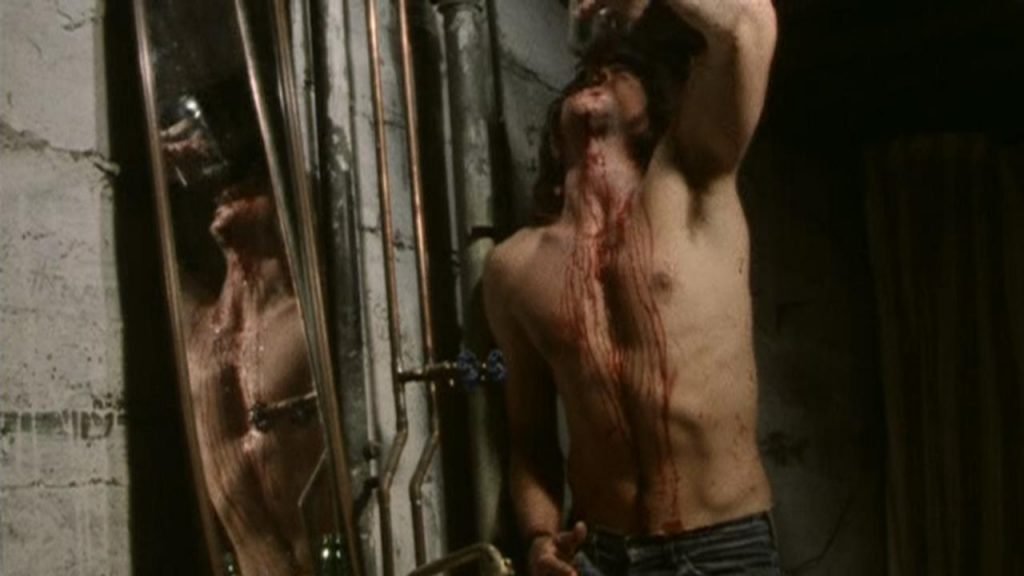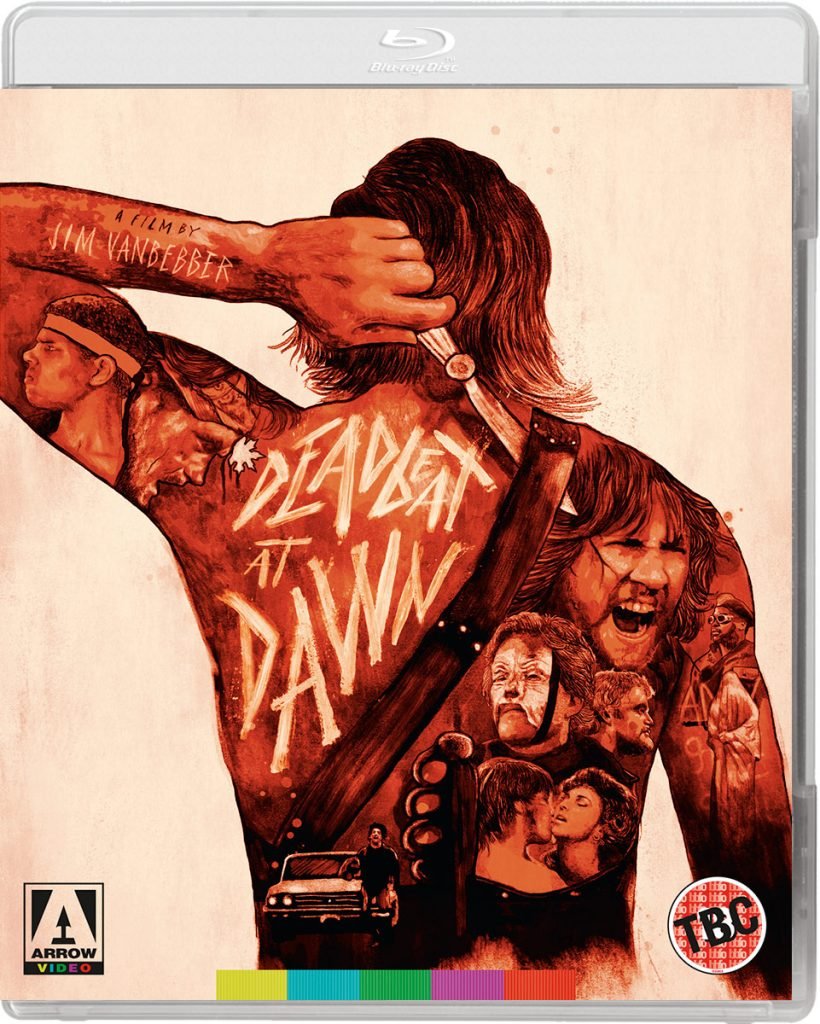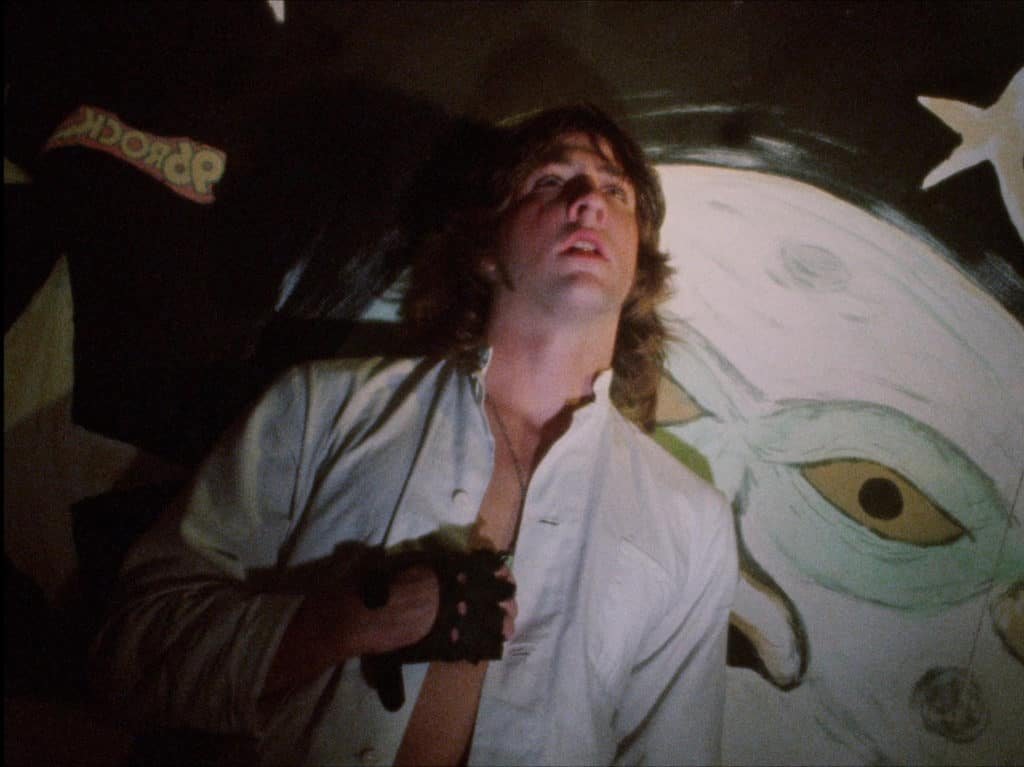 I’ve really only encountered director Jim Van Bebber thus far through his art-house spin on The Manson Family (1997), a film which I confess didn’t quite gel with me – but I’ve never, until now, seen his first feature Deadbeat at Dawn, made around a decade earlier but filmed over four years altogether. Deadbeat at Dawn is certainly more linear than The Manson Family, but it’s still a surprisingly multi-layered spin on your standard gang movie, with some hints of the art-house approach yet to come. All in all, it makes for a gritty but expansive experience, something quite unlike any of the other 80s gang movies made during the decade, whilst still recognisably part of that sub-genre.
I’ve really only encountered director Jim Van Bebber thus far through his art-house spin on The Manson Family (1997), a film which I confess didn’t quite gel with me – but I’ve never, until now, seen his first feature Deadbeat at Dawn, made around a decade earlier but filmed over four years altogether. Deadbeat at Dawn is certainly more linear than The Manson Family, but it’s still a surprisingly multi-layered spin on your standard gang movie, with some hints of the art-house approach yet to come. All in all, it makes for a gritty but expansive experience, something quite unlike any of the other 80s gang movies made during the decade, whilst still recognisably part of that sub-genre.
We start with a young woman named Christy (Megan Murphy) seeking meaning in her life from a visit to a clairvoyant. This facade of abstract questioning and inspirational guidance very soon gives way to something far more brutal. As Christie leaves her appointment, she is assaulted on the street by a rough named Danny who mentions her boyfriend, Goose, by name. Evidently, this city is in the throes of a gang war, where the members’ women are the unfortunate collateral.
Danny’s gang the Spiders are soon going hell for leather with their rivals, the Ravens – with a pitched battle in a cemetery between Goose (Van Bebber himself) and Danny (Paul Harper), resulting in Goose getting hurt. He’s all for immediate vengeance, but his long-suffering girlfriend tells him she’s getting sick of the strain of wondering if he’s going to get home alive every day. After some resistance, Goose agrees; it’s time to quit the life. However, once it’s known that he’s no longer in his gang – soon finding out that the Ravens and the Spiders have decided to set their differences aside to work together – he’s apparently a marked man. And so, apparently, by extension, Christie is in danger too. Goose misses his moment to protect Christie, and, traumatised by this event, he takes some time to gather himself. But when he’s conveniently roped back in to the Spiders/Raven gang to take part in one last heist, it’s the perfect opportunity to play.
There’s a pleasing patina of grime from the very first frames of Deadbeat at Dawn; its whole charm is that it’s wholly and gloriously unreconstructed, never stopping short of sex and violence – even if intimated – in a way that most of the more slick, conventional contemporary films of similar ilk would needs must. The 1980s of the film in general looks very much pre-clean up, pre-gloss, with every interior and every alley looking authentically grim, and a largely amateur cast add more veritas to all of this. Alongside, there’s a seam of cynicism running through the film which works really well. Christie is into New Age beliefs, coming across as some sort of gurgled last gasp of Age of Aquarius thinking which looks incredibly feckless by contrast against all the bloodshed going on around her. The religious guy at a diner later in the film also suggests something of a sneer, as an oafish man berates a waitress for not also making a breakfast for God when she serves him his. There are a few of these knowing moments.
 But then, the film does far more than make a series of knowing nods here and there in-between the fight scenes. The gang warfare itself veers from plausible to risible in some places: Goose’s training sequences look oddly choreographed, for instance, and dialogue spoken by some of the Spiders sounds rather stagey. In effect, lots of elements of Deadbeat at Dawn play out like modern Grand Guignol: this is definitely performance, but the subject matter is ferocious and no one gets off lightly. The worst of the violence might not be on-screen in the nature of the ‘torture porn’ which followed the film around a decade or so later, but the well-timed glimpses and insinuations of the horrors inflicted upon people work just as well as the longer sequences (saved for an incredible later pay-off which very definitely shows us the works, with Van Bebber more than paying his dues by doing his own stunts during the course of the action). Yes, there are a few lulls as Goose falls back and regroups, but these add a lot to his character. In the end, you do find yourself rooting for this anti-hero, which is no small thing given his behaviour throughout the film.
But then, the film does far more than make a series of knowing nods here and there in-between the fight scenes. The gang warfare itself veers from plausible to risible in some places: Goose’s training sequences look oddly choreographed, for instance, and dialogue spoken by some of the Spiders sounds rather stagey. In effect, lots of elements of Deadbeat at Dawn play out like modern Grand Guignol: this is definitely performance, but the subject matter is ferocious and no one gets off lightly. The worst of the violence might not be on-screen in the nature of the ‘torture porn’ which followed the film around a decade or so later, but the well-timed glimpses and insinuations of the horrors inflicted upon people work just as well as the longer sequences (saved for an incredible later pay-off which very definitely shows us the works, with Van Bebber more than paying his dues by doing his own stunts during the course of the action). Yes, there are a few lulls as Goose falls back and regroups, but these add a lot to his character. In the end, you do find yourself rooting for this anti-hero, which is no small thing given his behaviour throughout the film.
It’s genuinely easy to see how Deadbeat at Dawn has garnered a cult following amongst exploitation fans. Made thirty years ago, it’s aged well, it looks good (insert the usual compliments to Arrow Films here) and above all else, it’s immensely ambitious. That comes across…I was going to say ‘even now’, but perhaps particularly now, with our jaded appetites and a glut of by-numbers indie movies which soon fade from the memory. I don’t think that’s going to happen here. Admittedly a meld of dream sequences, hallucination and gang violence will not be for everyone, but I do hope the new Arrow release helps to bring the film to a new generation of viewers. I’d say it’s very much deserved.
Deadbeat at Dawn (1988) is available from Arrow Films now.
